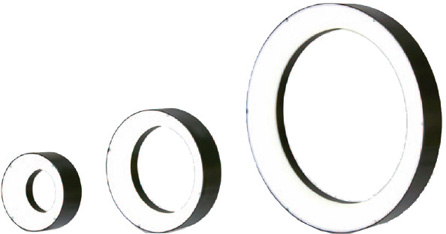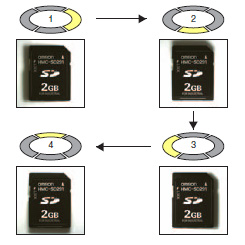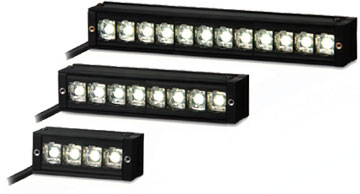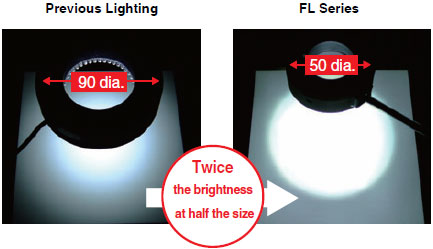• Combination of illumination directions, colors, and light intensities.
• Flexible illumination patterns for additional objects or inspection items.
Lighting for Image Processing

last update: July 8, 2019

• Combination of illumination directions, colors, and light intensities.
• Flexible illumination patterns for additional objects or inspection items.


• Captures images under different illumination directions to extract “characters” and “scratches and dents“.
Four lights are lit in turn, and variations in brightness are analyzed.
Printed characters with little variation in brightness even under different illumination directions are extracted as texture, and a dent with huge variation in brightness is extracted as a shape.

Inspection of dents on characters


• High-brightness ODR lighting beyond the limitations of LEDs.
• Stable inspection even for high-speed applications.
• Bright even through a polarizing filter.
• Easy wiring, mounting, and adjustment.


The cable can extend from either direction, allowing for horizontal or vertical wiring layouts on the mounting surface.

The light is structured for mounting with nuts to an arm on the back or side surfaces.
Minute changes in the position can be achieved by sliding the light.

Specialized mounting brackets enable mounting at a flexible angle.





• High brightness in a small package.
•Wide range of working distance.






• No separate power supply is required because the power is supplied from the Camera.
• Light is emitted when a trigger signal is received from the Camera.
• Simple connection between the Camera and the Lighting with a single cable.

With a compact design small enough to fit in the palm of your hand, the Controller can be built into the control panel or in the gap between production lines.
By using the longest lighting cable in the industry (25 m), the Controller can be installed along with the image processing monitor in a variety of locations. It is possible to adjust the lighting while looking at the screen.


This enables light emission synchronized with the camera using essentially any trigger, such as a photoelectric sensor.
The Controller can be connected to an image processing device to control lighting without any programming on a PLC.
[ Control Output ]
• PNP/NPN models
• Power source: 24 V
[ Lighting Emission Controls ]
• Lighting triggers can be used individually for each channel.
• Lighting delay and lighting time can be controlled.
Digital adjustment of light emission makes it easy to reproduce the lighting environment after line switchovers.


• No need to control light emission timing.
• Simple wiring from a vision system controller.
• Light intensity and luminance control are set through the vision system controller.
last update: July 8, 2019